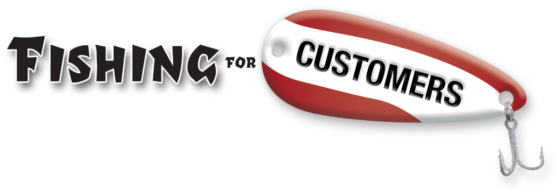This is a photo of a Boeing 747-200. This aircraft requires 219,000 foot pounds of thrust to get airborne, but only 100,000 foot pounds to cruise at altitude.
 Think of your ads as the jet engines which power your company.
Think of your ads as the jet engines which power your company.
As soon as you remove the thrust, you’ve grounded your campaign. And that’s a shame, since it typically takes four to six months for a campaign to start producing solid results.
Conclusion: Do not interrupt your advertising during tough economic times.
Study after study has delivered the same results: companies who pull in their resources and hunker down to ride out the economic uncertainties fall way behind when things get better.
Those same studies show that companies who aggressively pursue revenue in good times and bad leapfrog over their competitors in the following years.
This may take a certain amount of faith, because the evidence that your plan is working won’t be available for months. If you’re getting a bigger share of a shrunken pie, it may appear that you’re standing still. At least, for now. When the pie grows, your share will grow, too.
Think of it as buying market share at a discount.
There are two reasons your dollars go further in slow times.
First, when you’re one of the few voices still speaking to the market, your share of mind increases.
Second, when you’re one of the few active voices, all of your media representatives will suddenly become VERY negotiable when it comes to rates.
The average recession in the U.S. has historically lasted eleven months. We’re half way into this one, so during your negotiation be sure to lock in those new, lower rates for a full year. (Longer if the media will allow it).
What does advertising do?
No matter what the economy, aggressive advertising can:
Generate immediate sales Upsell current customers Provide new leads and prospects
And, don’t overlook the long-term benefit: the more people feel familiar with you, the more likely they are to choose to do business with you.
The strength of your advertising, and the revenue which results from it, will depend largely on your focus up to this point.
Direct response will be less effected by the economy than will image advertising. The more transactional your messages have been (full of facts and details), the more you can expect business to continue.
But, if you’ve been using brand-oriented messages (service and commitment based), don’t change them, since they tend to pay off better the longer you use them. (Remember, only 100,000 foot pounds of thrust to remain airborne). You will, however, want to create an additional transactional package to generate immediate cash, and to cover today’s operational costs.
Focus on Value – and on family values.
At times of economic uncertainty, people tend to “cave.” They spend much more time at home with their families.
Consider using family scenes in your ads where possible. Dump the rugged individual image. Extreme sports and adventure are bad images during a recession.
Do your ads cultivate a trust factor?
Is the ad about you, or about your customer?
Are you talking directly to your customer?
Are your claims credible, or full of hype and sensationalism?
Do you make a claim with full intention of backing it up, or do you know you’ll have to explain that claim because people will not understand the weasel clauses?
Can you use someone else’s credibility?
The concept is known as endorsed mailing. You send a letter endorsing another business to your customers, and he does the same for you with his. Select your endorsement partners with care. If the other business is trusted by his customers, you’ll be perceived as trustworthy, too.
Or, work out deals with other businesses to stuff their flyers into your merchandise bags. Of course, you’ll reciprocate.
Or, get three or four other reputable companies together and share the cost of printing individual offers on card stock, then mailing them all to your own lists. This one is known as “marriage mail.”
Focus on your existing customers.
Focus on media that you’ve proven will provide a sufficient return on your investment. This is not the time to experiment with ideas that might work to attract new customers. New customers are more expensive.
Instead, apply the 80/20 rule, and invest whatever you need to keep your 20 percenters very happy with you.
Cut money out of any project that you can’t prove return on investment (like trade shows, for instance), and use those funds to increase direct marketing to every customer in your database.
PR is golden.
Got positive quarterly results to report? Won any industry awards? Have a fabulous customer service story? Call your local media and share the news.
What’s interesting about your story? If it’s positive growth during a recession, financial editors will want to know how you did it. If winning your national award draws attention to your local business, most editors will want to play up local pride. And human interest stories always make great content – especially on a slow news days.
Public relations has two wonderful benefits: it’s much more credible than advertising, and it’s free (other than the investment of your time, and a few postage stamps or phone calls).
In summary:
When times are good, you should advertise. When times are bad, you must. But, don’t be reckless about it. Make every dollar count, now, to pay off in multiple dollars over the next few years.
__________
Chuck McKay is a marketing consultant who helps customers discover you, and choose your business. Questions about helping your business thrive during an economic recession may be directed to ChuckMcKay@ChuckMcKayOnLine.com.
